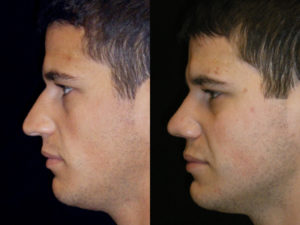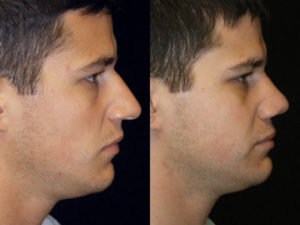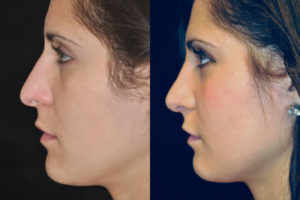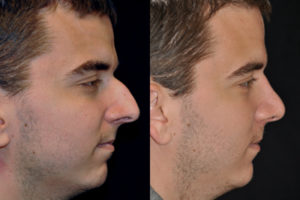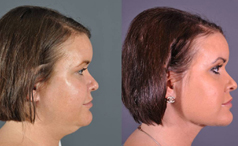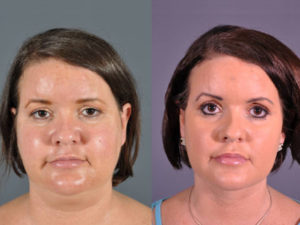Rhinoplasty
RHINOPLASTY SURGERY PROCEDURE OVERVIEW
Am I a good candidate for rhinoplasty surgery?
Some of the indications that you may be a good candidate for rhinoplasty are:
· your nose appears too large for your face
· there is a bump on the nasal bridge particularly noticeable from the side
· your nose seems too wide from the front
· the tip is thickened or enlarged
· your nostrils are excessively flared
· your nose has a twist or is crooked
· previous injury has made your nose asymmetrical
· problems breathing through the nose
Rhinoplasty surgery can create a more appealing and attractive nose that fits with the features of your face giving you a more balanced and youthful appearance.
It all starts with an effective evaluation and consultation!
In evaluating you for rhinoplasty, Dr. Dedo or Dr. Lipan will discuss your desired goals and then conduct an examination of your internal nasal structures. Your skin quality as well as the size, shape and strength of your nose and its relationship to your other facial features will be carefully studied. In some instances, Dr. Dedo or Dr. Lipan may recommend surgery of your chin, to improve facial balance. This procedure can be done at the same time as your rhinoplasty.
Dr. Dedo and Dr. Lipan use computer imaging to simulate your anticipated results. This will help you communicate your goals and help the doctor explain the limits of change achievable with surgery Dr. Dedo or Dr. Lipan will listen to your thoughts and aesthetic goals, provide ample time to discuss your personal treatment plan and answer all of your questions. Our goal is for you to leave with a clear understanding of what to expect from a rhinoplasty procedure.
THE HISTORY OF RHINOPLASTY SURGERY:
The operation of rhinoplasty is basically a taking apart of the components of the nose which are bone, cartilage and skin. By remodeling, reshaping or augmenting the various components of the nose alone or in combination, your doctor is able to alter the appearance of the outside of the nose. There are two approaches to rhinoplasty. One is the external procedure in which a small incision is made between the nostrils and the skin elevated up to fully expose the cartilage and bone of the nose. The other is the endonasal procedure where all incisions are made inside the nose. Dr. Dedo or Dr. Lipan will advise you as to which approach is best suited for your goals.
Rhinoplasty may also require straightening a deviated septum on the inside of your nose and reducing the turbinates to improve your nasal airway.
Dr. Dedo and Dr. Lipan have extensive training and experience performing nasal surgery. No two surgical procedures are alike and sculpting the nose to fit the particular face sometimes only requires very small changes. Call today to schedule an appointment with Dr. Dedo or Dr. Lipan to discuss a potential rhinoplasty.
Frequently Asked Questions:
What happens if I desire cosmetic changes to my nose as well as being able to breath better through it?
Insurance will likely pay for a reduction of the nasal fracture and correction of the nasal obstruction; however, any modification with the goal of enhancing the external appearance of the nose will not be covered by insurance. As such, patients have to pay this cosmetic portion of the procedure out of pocket.
Will I bruise after rhinoplasty surgery?
Bruising and swelling are an unpredictable part of surgery. By limiting how much the nose is manipulated during the procedure helps reduce bruising. The majority of rhinoplasty patients do not have extensive bruising and those that do typically have bruising that can be covered with make-up after a week. This bruising will completely dissipate in few weeks following surgery. In order to reduce the likelihood of any bruising, all rhinoplasty patients are required to discontinue aspirin or similar products (Advil, Motrin, Ibuprofen, Aleve, Naprosyn, Vitamin E) 2 weeks before surgery and during the recovery period.
Is nose packing used?
Dr. Dedo and Dr. Lipan use limited packing after rhinoplasty. The vast majority of all rhinoplasty patients have a small piece of packing placed in the nose at the time of surgery. Frequently the packing is removed in the recovery room prior to discharge from the surgical facility. In some situations the packing may be left in overnight and removed the next morning.
Are there any dressings or splints on my nose after rhinoplasty surgery?
Dr. Dedo or Dr. Lipan use three different types of external splints to hold the surgical changes of the nose in place. These protect the nose for approximately one week.
Will I be able to breathe through my nose after rhinoplasty surgery?
Postoperatively, any nasal surgery could cause the lining inside the nose to swell thereby causing obstruction. This gradually dissipates over a few weeks. Permanent obstruction is a risk of any nasal surgery. Dr. Dedo and Dr. Lipan are well trained in the techniques to avoid this complication.
BEFORE & AFTER PHOTOS
